If you are searching for the right flowering tree or shrub to add pizzazz to your landscape, check out these three groups of plants—magnolia, dogwood, and viburnum—and you will not be disappointed.
I. Magnolia Trees
There are more than 100 species in the genus Magnolia, some native to North America and others from Asia. They are often thought of as a southern plant, but there are varieties for northern gardens, too! Indeed, there is a magnolia for most of the country, from the Northeast to Southern California. All of them need well-drained soil, rich in organic matter and a sunny location sheltered from harsh winds.
- Star Magnolias (Magnolia stellata), native to Japan, are the hardiest, surviving in Zones 4 to 9. Their fragrant white or pink blooms appear early in the spring before the leaves emerge. Each flower has 25-35 petals and each tree can have hundreds of them! Grow it as a 10-15 foot tall shrub or prune it to a single stem or two and shape it into a tree-form. Look for 'Centennial' or 'Royal Star'.
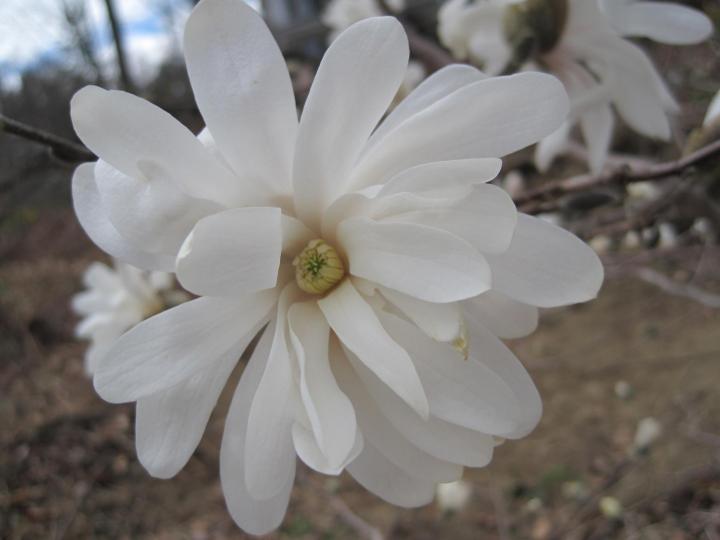
Star magnolia blossoms cover the tree in early spring before the tree leafs out.
- 'Elizabeth' and 'Yellow Bird' are hybrid magnolias that have yellow flowers—rare in a magnolia. Developed at the Brooklyn Botanic Garden, they grow to be 20-40 feet tall and are hardy in Zones 5-8.
- Saucer Magnolias (M. x soulangeana) have large, fragrant, tulip-shaped flowers in white, pink, purple, or two-tone shades. Some cultivars are large shrubs, while others eventually become huge, spreading trees. The purple buds of 'Alexandrina' open to cup-shaped pink and white blossoms that are 6-10 inches across! It grows to be 20-30 feet tall and is hardy in Zones 5-8. 'Genie' is a reblooming saucer magnolia that has an early flush of deep purple flowers followed by new blossoms over the summer. A small shrub, it grows to be 15 feet tall and is hardy in Zones 5-9.
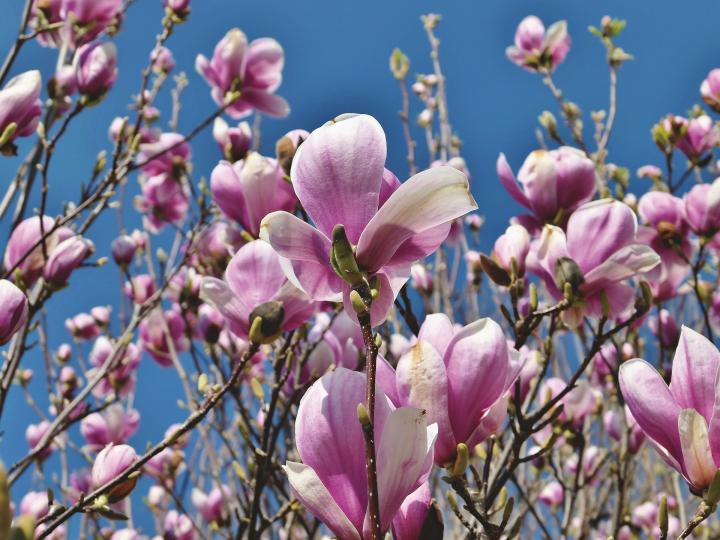
Saucer magnolia is sometimes called tulip tree for the shape of its blossoms.
- Southern Magnolia (M. grandiflora) is native to the southeastern US. They are impressive plants with glossy evergreen leaves and large, creamy-white flowers that have an intoxicating scent. Southern magnolias can grow to be quite large—80 feet tall and 40 feet wide—so give them plenty of room; otherwise, look for a compact cultivar like 'Little Gem'. They can be grown in full sun or part shade and are hardy in Zones 6-10.
When planting any magnolia, be sure you are happy with its location. They have extensive root systems and don't like to be moved.
II. Dogwood Trees
Dogwoods (of the genus Cornus) are another large group, with many different plants ranging from 6 foot tall multi-stemmed shrubs to 40 foot tall trees, cold hardy ones and those suited for growing in warmer locales—a dogwood for everyone!
- Cornelian Cherry (Cornus mas) Is an early bloomer that bears clusters of small, star-shaped yellow flowers before the forsythia blossom in the spring. It has tart but edible red berries that birds love. It grows up to 20 feet tall and has glossy green leaves that turn bright red in the fall. Hardy in Zones 4-8.
- Pagoda Dogwood (C. alternifolia) is a North American native that has spreading, tiered limbs which are covered with flat, white blossoms in the spring. These are followed by dark blue berries that birds find irresistible. The green leaves turn deep maroon-red in the fall and there are cultivars such as green and white 'Argentea' or green and yellow 'Golden Shadows'. They are not fussy about light, growing well in full sun to full shade. They tend to grow wider than tall—reaching 25 feet high but spreading over 30 feet—and are hardy in Zones 3-7.
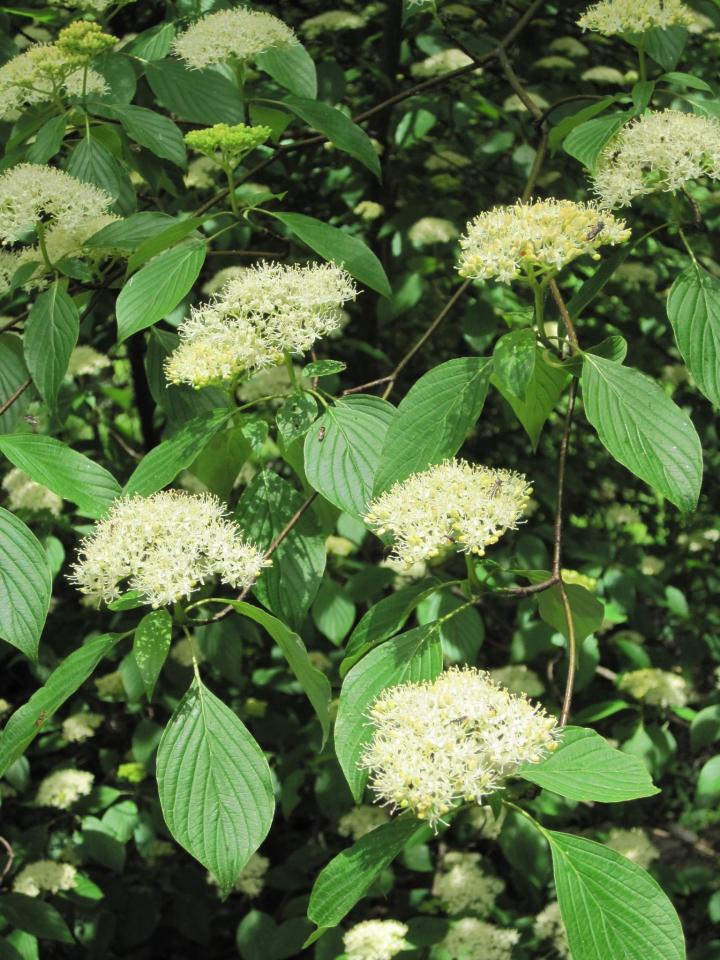
Pagoda dogwood flowers profusely, even in shade.
- Kousa Dogwood (C. kousa) is one of the most popular blossoming trees for home landscapes. Native to Japan, it has pointy white flower bracts in early summer and red fruit from late summer into fall. The purple-red fall foliage and exfoliating bark give it four seasons of interest. For pink flowers, look to 'Satomi', which blossoms a little later than the white varieties. They grow 15-25 feet tall and are hardy in Zones 5-8.
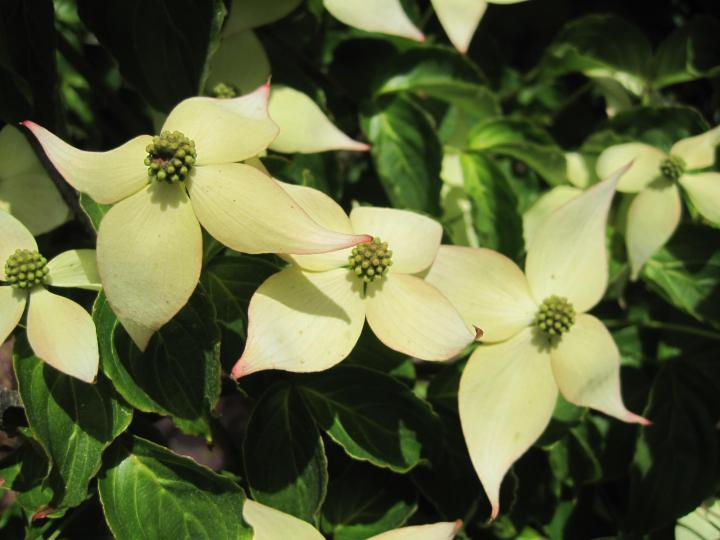
The actual "flower" on a kousa dogwood is in the middle of the four white bracts.
- Flowering Dogwood (C. florida) is a native tree very similar to the kousa dogwood, with white or pink flower bracts in early spring, red fruits, crimson-purple foliage in fall, and textured bark. It grows well in partial shade and slightly acidic soil, growing 30 feet tall. Hardy in Zones 5-9.
III. Viburnum Shrubs
The versatile Viburnum also has loads of different plants to choose from, but before you make your purchase, one important thing to consider is the viburnum leaf beetle. Sadly, this critter has killed many a viburnum in the northeastern U.S. It seems to prefer natives and ones with soft leaves, so I will limit this list to two viburnums that Cornell University has found to be less appealing and naturally resistant to this destructive insect. If the beetle is not found in your area, feel free to branch out and try fragrant snowball, arrowwood, smooth witherod, and Bodnant viburnums.
- Koreanspice (Viburnum carlesii) has heavenly-scented, waxy white blossoms in mid-spring. It is a 4-6 foot tall shrub, grows in full sun to part shade, and is hardy in Zones 4-7. If space is an issue, look for dwarf 'Compactum', which grows only 3 feet tall.
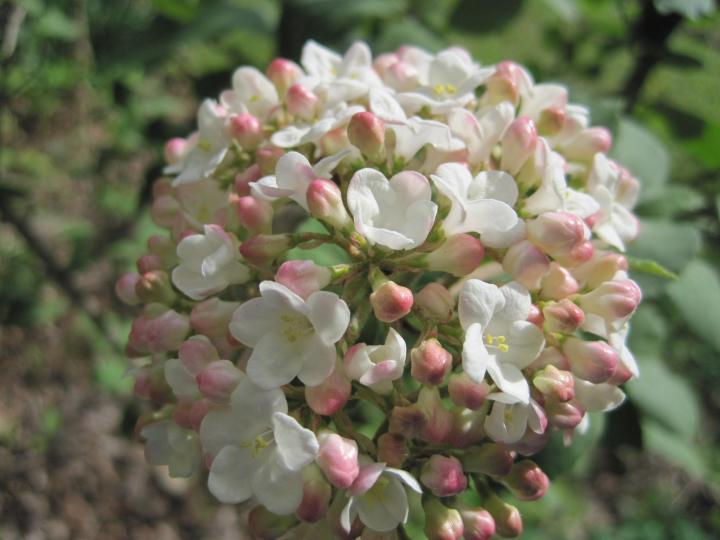
If you could smell this Koreanspice blossom, you would swoon! It is delicious!
- Doublefile Viburnum (V. plicatum tomentosum) and its many hybrids have tiered branches that are covered with flat white blossoms in the spring. Leaves start out bronze-green in spring, mature to a dark green in summer, and turn wine red in fall. It grows wider than tall, topping out at around 10 feet high. Look for white-flowered 'Mariesii' or 'Summer Snowflake', or pink-flowered 'Pink Beauty'. For small gardens, try dwarf 'Watanabei' that grows 4-6 feet tall. Good for Zones 5-8.
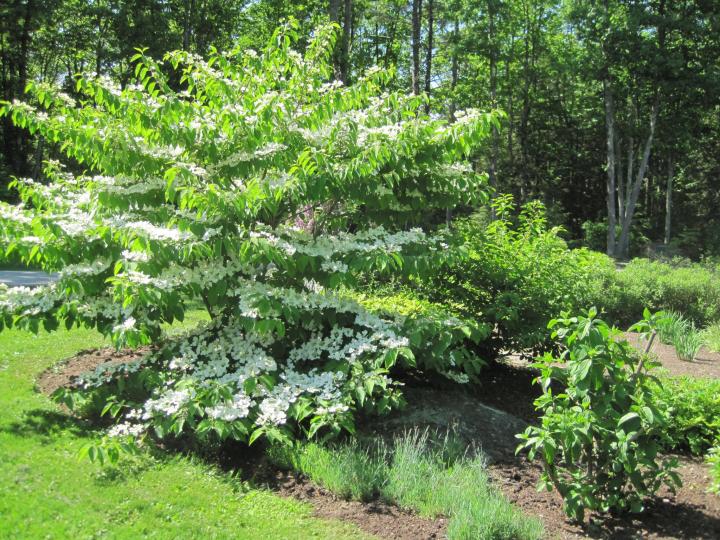
The doublefile viburnum is an excellent landscape shrub.
Still not sure which shrub or tree is right for you? See my advice on best shrubs to plant.
